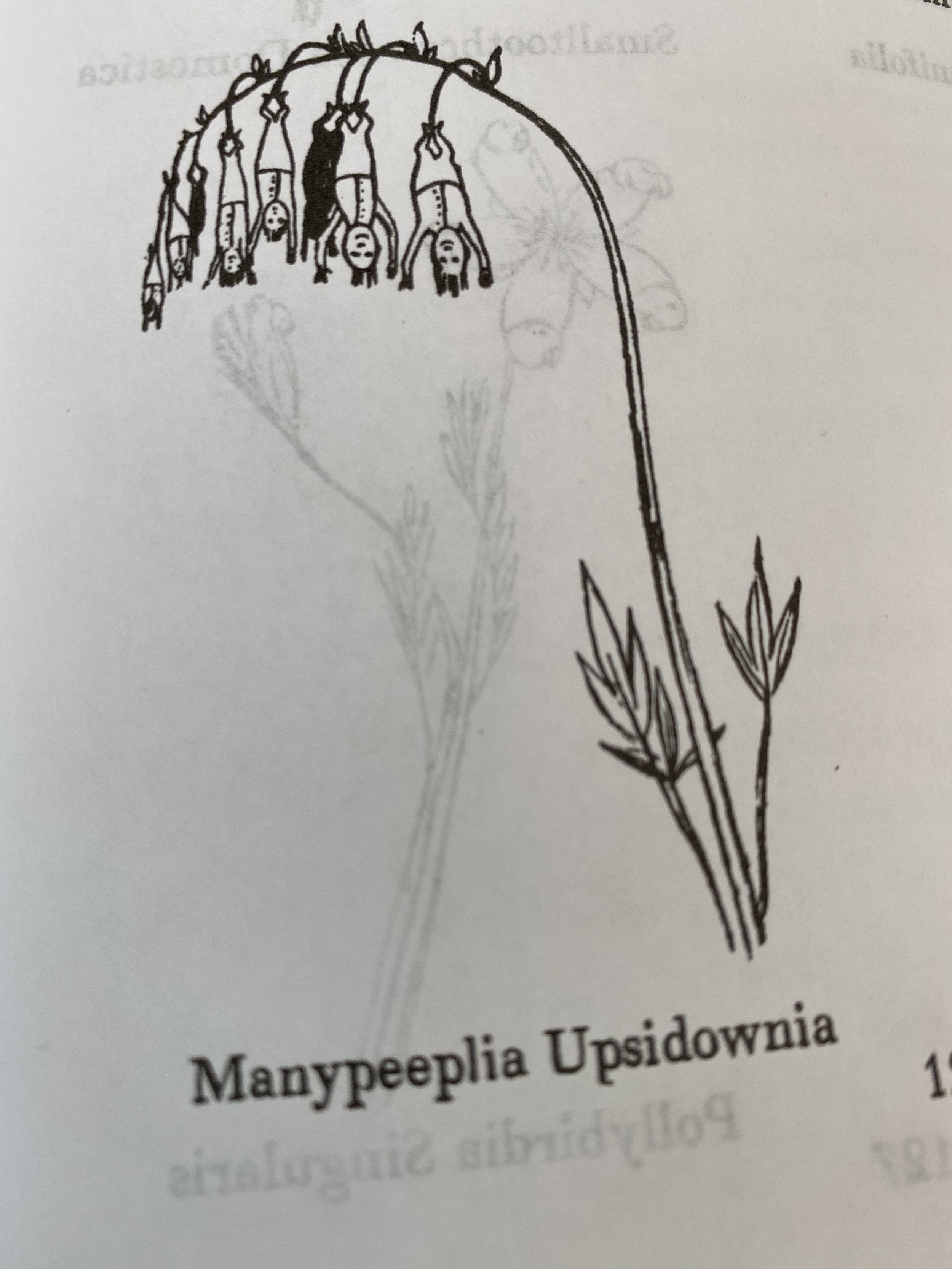Imagination as a healing tool
‘Manypeeplia Upsidownia’ - Edward Lear
As humans, one of our often overlooked and undervalued attributes, is our ability to IMAGINE.
"Imagination is not an empirical or superadded power of consciousness, it is the whole of consciousness as it realises it's freedom" - Jean-Paul Sartre
As a naturopath I spend a lot of my time researching complex health issues. However, there is another part to me, a very creative mind and free spirit. This creativity must be expressed or I start to feel off and out of balance. I have come to learn that I must allow both the academic and creative aspects of myself time to for expression. When I do, life takes on a magical quality, a flow in all areas.
“The true sign of intelligence is not knowledge, but imagination!” - Albert Einstein
“Imagination is more important than knowledge. For knowledge is limited to all we now know and understand, while imagination embraces the entire world, and all there ever will be to know and understand” - Albert Einstein
Children shift effortlessly between reality, imagination, daydreaming and play. However, as we get older we are constantly told to grow up, stop daydreaming; which for some, closes off the ability to imagine. We shut it down, stop daydreaming and imagining and just get on with the practicalities of life.
As adults we forget to play and be silly and when things get tough we feel stuck. As we grow up we tend to lose the connection to our imaginary worlds and turn to practical, external means to get us through life’s ups and downs. As children we used our imagination to help us learn and grow, to work through our feelings and to become better. We need imagination to take us to the next point in our lives to get us jumping out of bed in the mornings and living a full life.
Imagination is the source of all creativity, everything outside of the natural world was first imagined before it became a reality. Imagination powers our dreams, warms our hearts and can also be a profoundly powerful tool in healing.
"Imagination is everything. It is the preview of life's coming attractions" - Albert Einstein
We are constantly engaging with our imagination in an unconscious way as we form mental images alongside thoughts. Our brains and bodies are intimately connected and research shows that mental and physical changes are possible through the imagination.
You often hear this in relation to athletes, such as sprinters who visualise and imagine themselves winning a race. They imagine the race over and over in their minds eye. They visualise themselves cleanly taking off from the starting blocks, running a strong powerful race ahead of the pack and finally as the first to cross the finish line and winning the race. It is as if the visualisation communicates to our bodies that winning is possible.
Research by Fadare et al. (2022) shows that visualising had a significant improvement on sporting performance. It is thought that this ability is due to brain plasticity. By repeatedly visualising certain actions athletes can rewire neural pathways to improve performance by preparing the body to achieve these actions in reality.
Throughout history the imagination has been used for healing. Carl Jung created ‘Active Imagination,’ a therapeutic approach based on the healing function of the imagination to facilitate growth and to examine the psyche. Guided imagery, meditation, metaphor and storytelling have been used to improve mood disorders such as anxiety and depression, chronic pain and disease. Art therapy and cognitive behavioural therapy (CBT) are commonly used with significant success around the world.
Research was conducted during the COVID-19 Pandemic ‘using the imagination in response to stress and uncertainty’. It was called the Fantastic Reality Ability Measurement (FRAME) Scale (Rubinstein et al. 2023 p. 1-9). FRAME was characterised as “the capacity to use imagination in response to stress or trauma”. In other words the imagination was employed during this time as a tool to cope with the stress of lockdowns and social restrictions. FRAME showed strong correlations between complexity of imagination and resiliency. It showed control, coping and playfulness where vital in cultivating resilience. It showed that these tools and the imagination were beneficial coping tools that support resiliency during stressful times (Rubinstein et al. 2023 p. 1-9).
For those living with chronic illness patient’s health improves faster when they focus on health rather than disease. Engaging the senses by focusing our attention on colours, sounds, scents, feelings and emotions that remind us of health; really imagining what it feels like to be healthy and regularly embodying these sensations can all help support improved quality of life and overall health.
When I was going through aggressive chemotherapy I used to look in the mirror every day and repeat to myself. ‘I am totally healthy. I am totally healthy’. Despite the reality of a very sick, 33 year old girl with no eyebrows or hair, looking back at me. Through this shift in mindset I started to manifest wellness, something I continue to practice today. Initially I was very fearful of the inevitable chemotherapy sessions. So, instead of going into my sessions with the mindset that it was toxic and would hurt me. I shifted the narrative and engaged my imagination. I would imagine the chemotherapy flowing through my body as a healing gold light that was going to clear away any remaining cancer cells and keep me well. This not only served to calm my nerves but also enabled me the space to endure the ups and downs that lay ahead of me.
We can all use our imagination to help shift us if we are stuck, help us think about who we are and what we want for our lives so that we can move through this world in a more peaceful and empowered way. Ultimately, our imagination can guard and protect us during challenging times.
Beware though, the imagination has its own duality that we must remain conscious of, as Deepak Chopra so elegantly put it......
"The best use of imagination is creativity. The worst use of imagination is anxiety" - Deepak Chopra
When I was contemplating what to call my naturopathic clinic I came very close to calling it ‘Manypeeplia Upsidownia’ in tribute to Edward Lear’s Nonsense Botany. The concept of ‘many people upside down’ really resonated with me and I liked the silly, playfulness of it all. When we are not well we can often feel like we are upside down or inside out so it really fit for me and made me giggle.
Edward Lear was an English polymath who’s interests included art, illustration, writing, poetry and music. He was widely admired for his nonsense poetry and other poems, also called limericks. His Nonsense Botany was my favourite. In the spirit of imagination, for the love of botany and a bit of silliness, I thought I would share with you some 'Nonsense Botany' by Edward Lear.
The full collection of Nonsense Botany by Edward Lear can be found here, Enjoy:
https://publicdomainreview.org/collection/edward-lears-nonsense-botany-1871-77
References:
Fadare et al. (2022) A Voyage into the Visulization of Athletic Performances: A Review. American Journal of Multidisciplinary Research and Innovation (AJMRI). 2832-4854. DOI: https://doi.org/10.54536/ajmri.v1i3.479
Public Domain Review. Edward Lear’s Nonsense Botany (1871-77)
https://publicdomainreview.org/collection/edward-lears-nonsense-botany-1871-77
Rubinstein, D. O’Rouke, N. Lahad, M. (2023). Using imagination in response to stress and uncertainty in the time of COVID-19: further validation of the Fantastic Reality Ability Measurement (FRAME) Scale. Frontiers in Psychology. 1-9. DOI: 10.3389/fpsyg.2023.1115233.
Labuschagne, D. (2006). Imaginal Medicine: A literature review. Kinergetix. 1-17. DOI: 10.13140/2.1.1771.7446.

